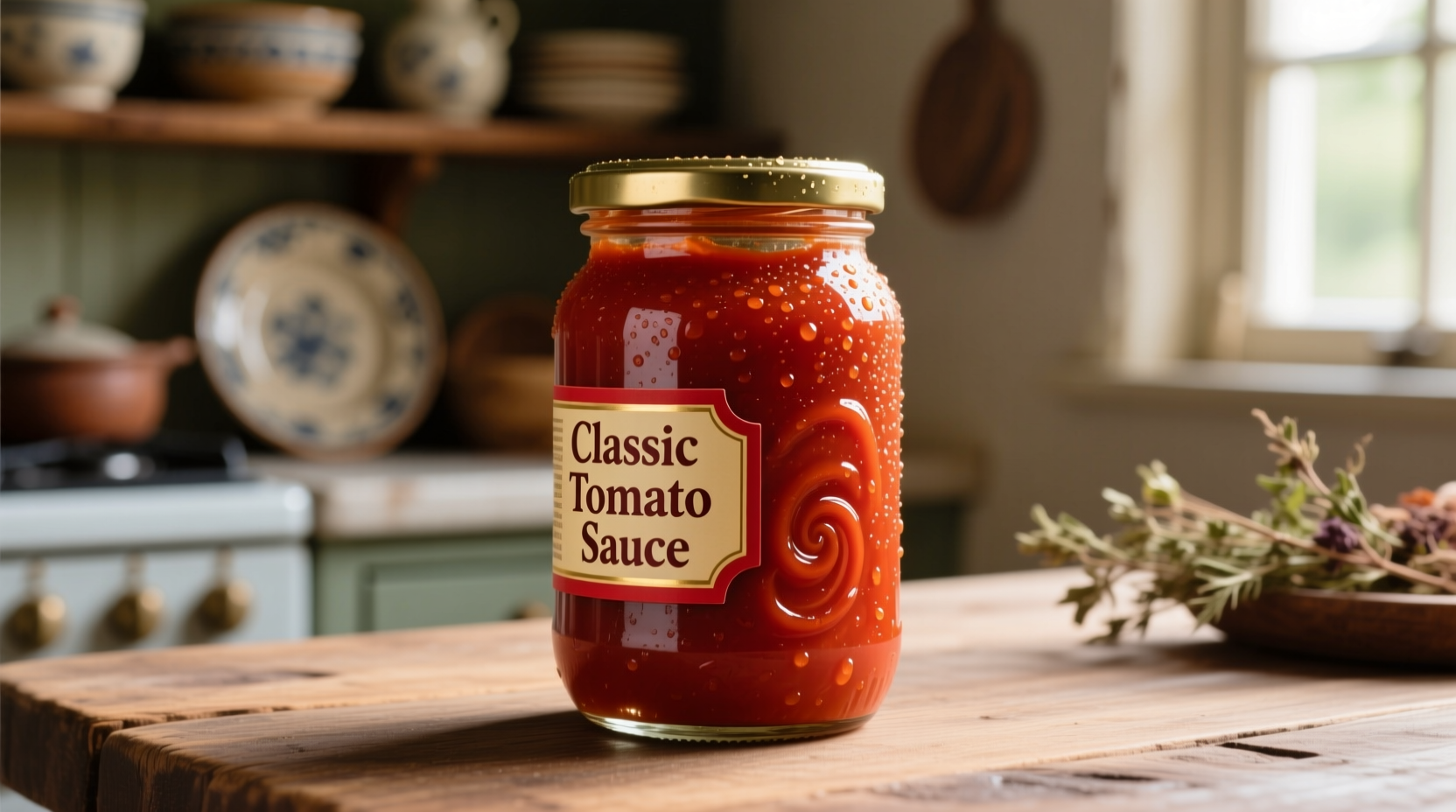When you open a jar of tomato sauce, you're getting a convenient pantry staple made from cooked tomatoes, seasonings, and sometimes additional ingredients like onions, garlic, or herbs. High-quality jarred tomato sauce contains simple ingredients with no artificial preservatives, maintains a vibrant red color, and delivers rich tomato flavor without excessive sweetness or acidity.
Understanding Jarred Tomato Sauce Basics
Many home cooks wonder whether jarred tomato sauce can deliver restaurant-quality results. The truth is, modern production methods have significantly improved the quality of commercially prepared tomato sauces. According to the U.S. Food and Drug Administration, properly processed tomato products maintain nutritional value while offering convenience that fits modern lifestyles.

Reading Labels Like a Professional Chef
Not all tomato sauces are created equal. When selecting a jarred tomato sauce, check the ingredient list for these quality indicators:
- Tomatoes should be the first ingredient (look for "whole peeled tomatoes" or "crushed tomatoes")
- Minimal added sugar (less than 4g per serving)
- Natural seasonings rather than artificial flavors
- No unnecessary thickeners or stabilizers
- Lower sodium content (under 200mg per 1/2 cup serving)
| Quality Indicator | Acceptable Range | Potential Red Flag |
|---|---|---|
| Sodium per 1/2 cup | Under 200mg | Over 300mg |
| Sugar per 1/2 cup | Under 4g | Over 6g |
| Tomato ingredient | Whole/crushed tomatoes first | Tomato puree or paste first |
| Added oils | Extra virgin olive oil | Vegetable oil or unspecified oils |
Nutritional Profile: What's Really Inside
According to the USDA FoodData Central, a typical half-cup serving of basic tomato sauce contains approximately:
- 70-80 calories
- 3-4 grams of fiber
- 4-5 grams of natural sugars
- Significant lycopene content (a powerful antioxidant)
- Good source of vitamin C and potassium
The canning process actually increases lycopene availability compared to raw tomatoes, making jarred sauce potentially more nutritious than fresh in this specific aspect. However, premium brands often use vine-ripened tomatoes processed at peak season for superior flavor development.
Jarred vs. Homemade: Practical Decision Guide
While homemade sauce offers customization, quality jarred options provide consistent results with minimal effort. Consider these factors when deciding which to use:
- Time constraints: When you have less than 30 minutes to prepare a meal, quality jarred sauce delivers excellent results
- Skill level: Beginner cooks often achieve better consistency with jarred sauce
- Special dietary needs: Jarred sauces offer reliable gluten-free, vegan, and low-sodium options
- Flavor complexity: For special occasions, homemade allows for personalized flavor profiles
Creative Uses Beyond Pasta
Professional chefs utilize jarred tomato sauce in numerous applications that home cooks often overlook:
- Base for shakshuka: Simmer eggs directly in warmed tomato sauce for a protein-rich breakfast
- Pizza foundation: Use as pizza sauce but reduce slightly first to prevent sogginess
- Stew enhancer: Add to bean or vegetable stews for depth of flavor
- Marinade component: Mix with olive oil and herbs for chicken or fish
- Quick soup starter: Dilute with broth for an instant tomato soup
Storage and Freshness Tips
Proper storage significantly extends the quality of opened jarred tomato sauce:
- Transfer to airtight container immediately after opening
- Refrigerate and use within 5-7 days for best quality
- Freeze in ice cube trays for portioned future use
- Always use clean utensils to prevent contamination
- Check for off-odors or mold before using
Unopened jars maintain quality for 12-18 months when stored in a cool, dark place. The USDA Food Safety and Inspection Service recommends checking for bulging lids or leaks before purchasing, as these indicate potential spoilage.
When Quality Matters Most
Certain dishes benefit significantly from premium jarred tomato sauce:
- Simple preparations: Dishes with few ingredients showcase sauce quality
- Quick weeknight meals: When time prevents homemade preparation
- Teaching cooking: Consistent results help beginners learn techniques
- Dietary restrictions: Reliable gluten-free or vegan options
For complex sauces with many ingredients, the difference between standard and premium jarred options becomes less noticeable. The key is matching your sauce quality to your dish complexity.











 浙公网安备
33010002000092号
浙公网安备
33010002000092号 浙B2-20120091-4
浙B2-20120091-4